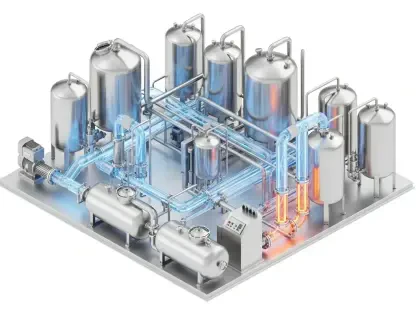The liquefied natural gas (LNG) industry is at the forefront of shaping global energy policies and economic strategies, serving as a critical component of the world’s energy matrix. As nations pivot toward cleaner energy solutions to address climate change, LNG has emerged as a credible alternative to coal and oil. The current state of the LNG industry is characterized by rapid technological advancements, broad market segments, and varied regulations. With key players such as Glenfarne leading ambitious projects and innovative technologies enhancing efficiency and safety, LNG is increasingly becoming pivotal for energy security and economic resilience. This growing demand is compelling policymakers to reconsider their regulatory approaches, aiming to balance environmental impacts with energy requirements.
The LNG Industry Overview
In the dynamic realm of the LNG industry, significant shifts are underway, transforming how energy is produced, transported, and consumed. Technological advancements are redefining the operational processes involved in LNG production and distribution, making them more efficient and environmentally friendly. Notable industry segments include extraction, processing, storage, and transportation, each playing a unique role in ensuring the delivery of this essential resource. Major industry players invest heavily in innovations, developing new methods that facilitate safe and cost-effective LNG exportation with strict adherence to international regulations. These regulations form a vital part of the industry’s framework, ensuring safety, encouraging investment, and setting standards for global compliance.
Key Industry Trends and Dynamics
Emerging Trends and Innovations
The LNG industry is witnessing a range of emerging trends that are shaping its future. Innovation within the sector is driving significant enhancements, especially concerning extraction technologies and shipping efficiencies. As consumer preferences evolve towards more sustainable and eco-friendly energy sources, companies are exploring new methodologies for reduced environmental footprints. Moreover, there is a marked shift towards regional partnerships that leverage geopolitical stability, showcasing strategic collaborations between countries like the U.S. and Taiwan. In this light, Taiwan’s exploration in strengthening ties with the U.S. through LNG collaborations underscores an emerging trend that aligns with global energy security priorities.
Market Projections and Forecasts
Recent market projections show a continued upward trajectory for LNG demand globally, with significant growth expected in Asia due to its need for cleaner energy. This demand fuels expansion opportunities for projects like the Alaskan LNG initiative, which targets substantial revenue from contracts exceeding $115 billion. Market performance indicators highlight steady growth with reliable supply chains, geopolitical collaborations, and evolving consumer preferences contributing to this rise. Analysts forecast a sustained increase in LNG exportation as infrastructure developments and strategic alliances take root, offering brighter prospects for both established and emerging players in the industry.
Challenges and Opportunities
The LNG industry faces a myriad of challenges that require careful navigation and strategic planning. Technological complexities in production and transportation raise concerns about maintaining efficiency and reducing operational costs. Furthermore, regulatory pressures demand rigorous compliance and adaptation, making the market landscape more intricate. However, these challenges present countless opportunities for innovation, technological advancements, and strategic alliances. Companies can leverage these prospects by investing in research and development, improving digital infrastructures, and fostering international partnerships that enhance overall industry resilience and sustainability.
Regulatory Climate
Regulatory measures form the backbone of the LNG industry’s operational framework, with various laws and standards dictating its functional landscape. Compliance and security measures are critical, given the environmental stakes and safety protocols required in handling LNG. Recent regulatory changes emphasize stricter emissions targets and safety benchmarks, prompting companies to innovate and adapt swiftly. These frameworks ensure that as the industry expands, operational practices remain aligned with global safety and environmental standards, securing public trust and fostering sustainable growth.
Future Prospects and Developments
Looking ahead, the LNG industry is poised for substantial developments driven by technological innovations, growing market demands, and strategic collaborations. Future prospects entail advanced energy solutions that align with eco-friendly initiatives while meeting rising consumption demands. Potential market disruptors such as alternative energy sources and shifting geopolitical strategies may influence growth trajectories. Nevertheless, continued focus on innovations, regulatory advancements, and consumer-centric solutions can propel the industry toward sustainable growth. Global economic conditions will also play a pivotal role in shaping industry practices and facilitating robust international partnerships.
Conclusion and Strategic Recommendations
As the LNG industry evolves, the intersection of regulatory compliance, technological advancement, and geopolitical collaboration has defined its trajectory. Taiwan’s strategic LNG investments with the U.S. serve to bolster trade ties, reinforcing energy security amidst global uncertainties. Future industry success hinges on continued innovation, informed regulation, and robust alliances that collectively drive growth and ensure sustainability. Strategic recommendations for stakeholders include fostering technological breakthroughs, expanding infrastructure capabilities, and nurturing international collaborations to optimize energy policies and market responses. This approach promises a balanced pathway toward robust industry expansion, meeting the dual objectives of environmental stewardship and economic prosperity.









